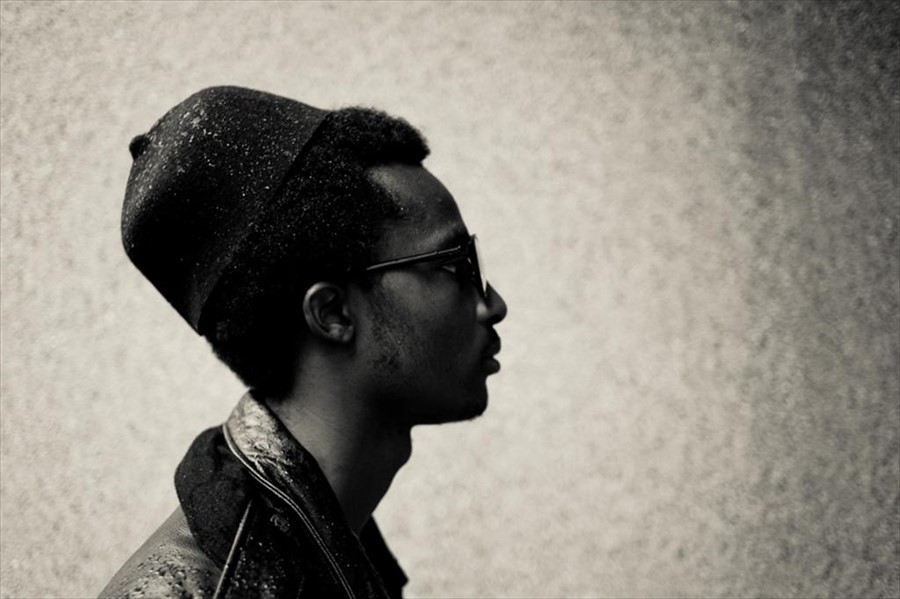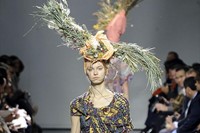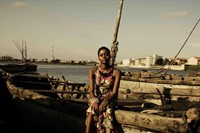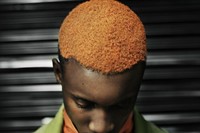Over the years many designers, from the Algerian-born Yves Saint Laurent to Vivienne Westwood and Junya Watanabe, have referenced the vibrancy and individuality of African style with its rich tradition of diverse body adornment and strikingly
Over the years many designers, from the Algerian-born Yves Saint Laurent to Vivienne Westwood and Junya Watanabe, have referenced the vibrancy and individuality of African style with its rich tradition of diverse body adornment and strikingly patterned textiles. Yet the emergence and success of African fashion as an industry in itself has been a far more recent development – a reflection of the continent’s advancements politically, economically and technologically.
In her book, New African Fashion, Helen Jennings explores its gradual evolution into a now flourishing trade, considering its formative trials and feats, its pioneering muses and models and the new wave of exciting designers making their mark on the global fashion market by channelling “an African flavour in an accessible way” (think London-based brand Casely-Hayford). Here we talk to Jennings about African fashion’s greatest strengths and her favourite designers.
What inspired you to compile and write this book?
I’ve been a style journalist for several years and have written about fashion from all over the world in the process. In late 2008, I became launch editor of ARISE magazine, a London-based large format quarterly dedicated to global African fashion, music, style and society. The job has afforded me the opportunity to learn all about African fashion and travel around the continent meeting its movers and shakers. In a contemporary sense African fashion is a young and exciting field that is just now beginning to step into the international arena. There was no up to date book on the subject and there seemed to me a huge thirst and need for one, so I decided to write it.
Generally speaking, what do you consider to be the biggest strengths of African fashion today?
Right now what makes African fashion so strong is the way the best designers combine indigenous and traditional influences with global ones. By balancing the fashion industry’s pursuit of the new each season with the appreciation of beauty and style that is so deeply rooted in Africa’s consciousness, African fashion is offering the world something that feels both fresh and authentic. As most designers have their own ateliers and source their materials locally, African fashion is also by and large ethically and environmentally conscious and using textiles that many in the West have never worn before.
Yves Saint Laurent is discussed in your book as the first internationally acclaimed fashion designer of African descent, what is his legacy regarding the integration of African ideas into Western style?
His landmark spring/summer 1967 collection of African dresses made from raffia, wooden beads and shells has been much re-imagined ever since – look at Dolce & Gabbana in S/S05 and Gucci in S/S11. Later collections created safari style and offered his spin on north African tunics, caftans, djellabas and turbans. His work has influenced generations of designers the world over. Young British Ghanaian designer Adrien Sauvage has a huge portrait of him on his studio wall and told me: “When I get into a creative quandary, I simply ask myself ‘What would Yves do?’ He set the standard by which I judge my work.”
Could you select a few of your favourite designers featured in New African Fashion and explain why they stand out to you in particular?
There are so many! Maki Oh, an emerging Nigerian designer whose work is concerned with preserving traditional African fabrics (including her beloved indigo-dyed adire) and clothing (such as the men’s baggy agbada suit) by injecting them with her take on modern female sensuality. And Duro Olowu, the celebrated London-based Nigerian designer who is known for his delightful cacophony of vintage couture fabrics, kaleidoscopic prints and sensual tailoring. His fans include Michelle Obama, Iman, Bethann Hardison, Shala Monroque and Iris Apfel and he made his New York Fashion Week debut for A/W11.
New African Fashion is published by Prestel and is available now.
Text by Daisy Woodward



